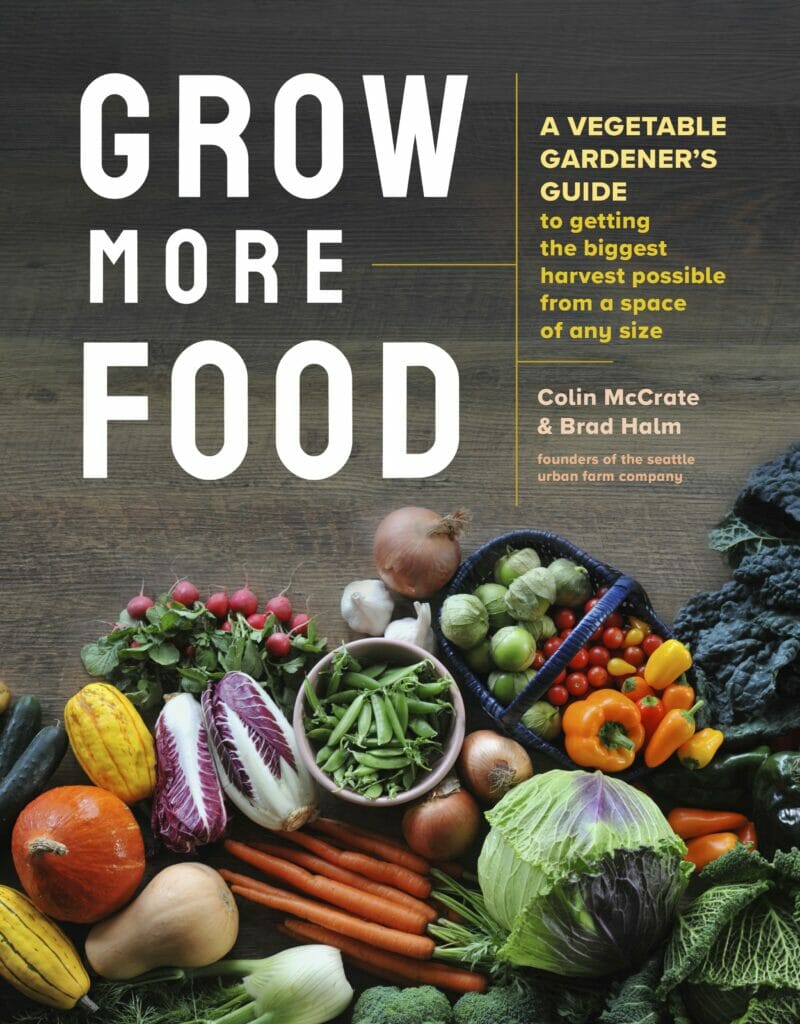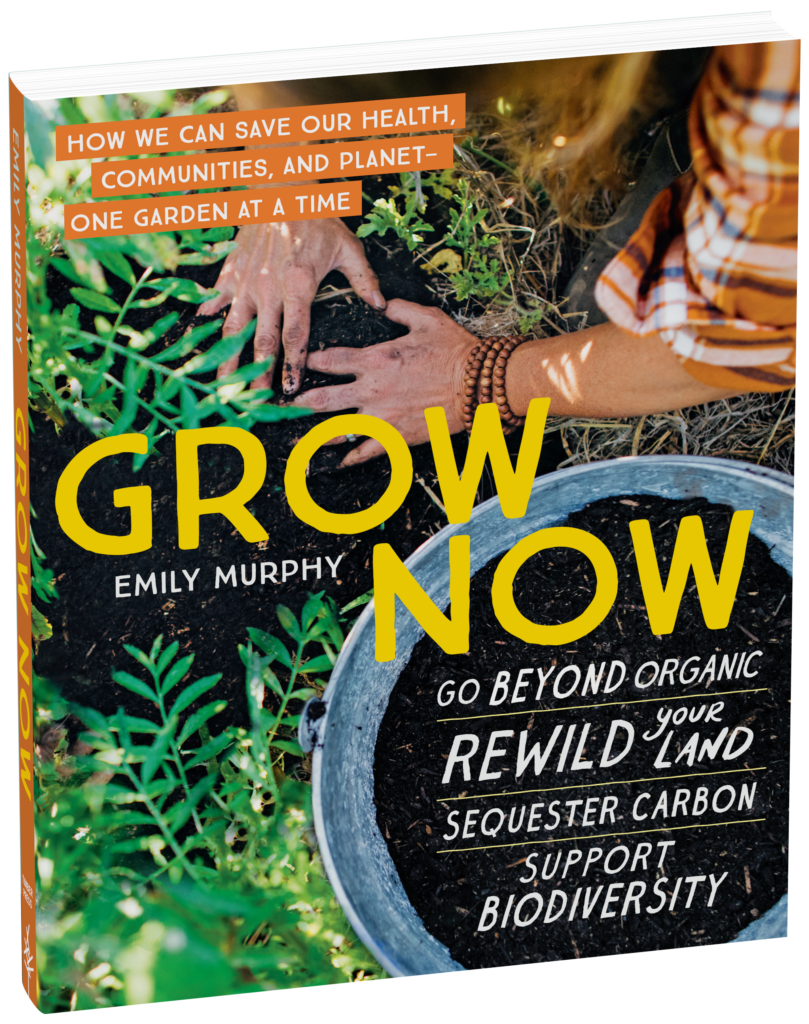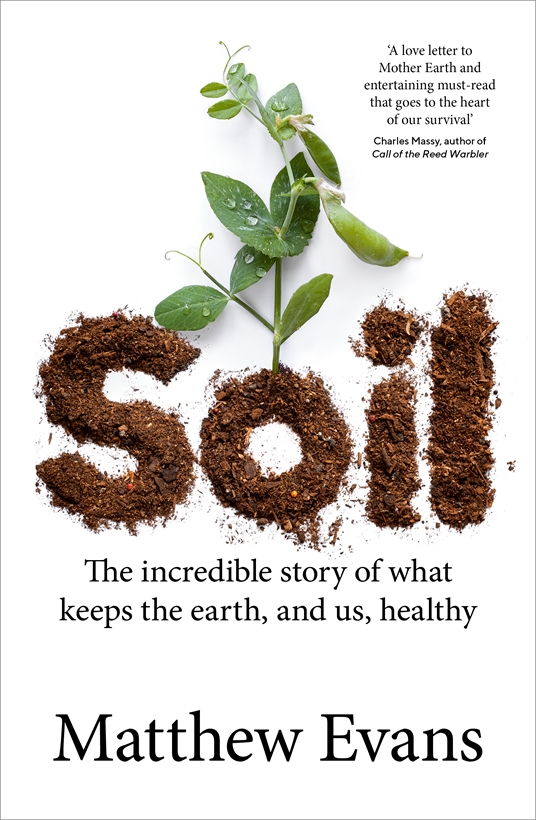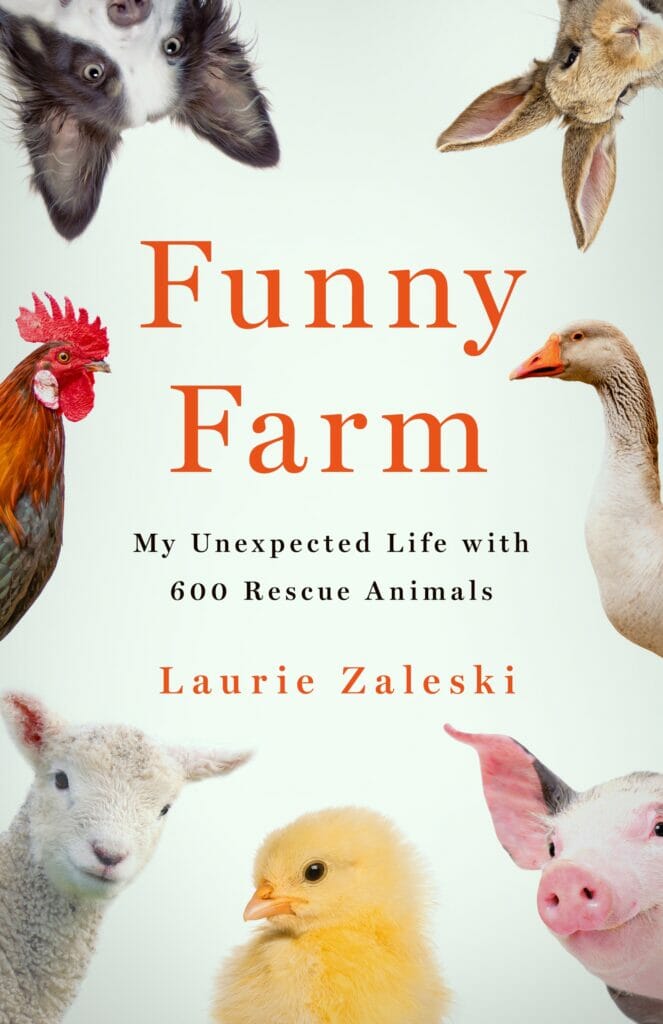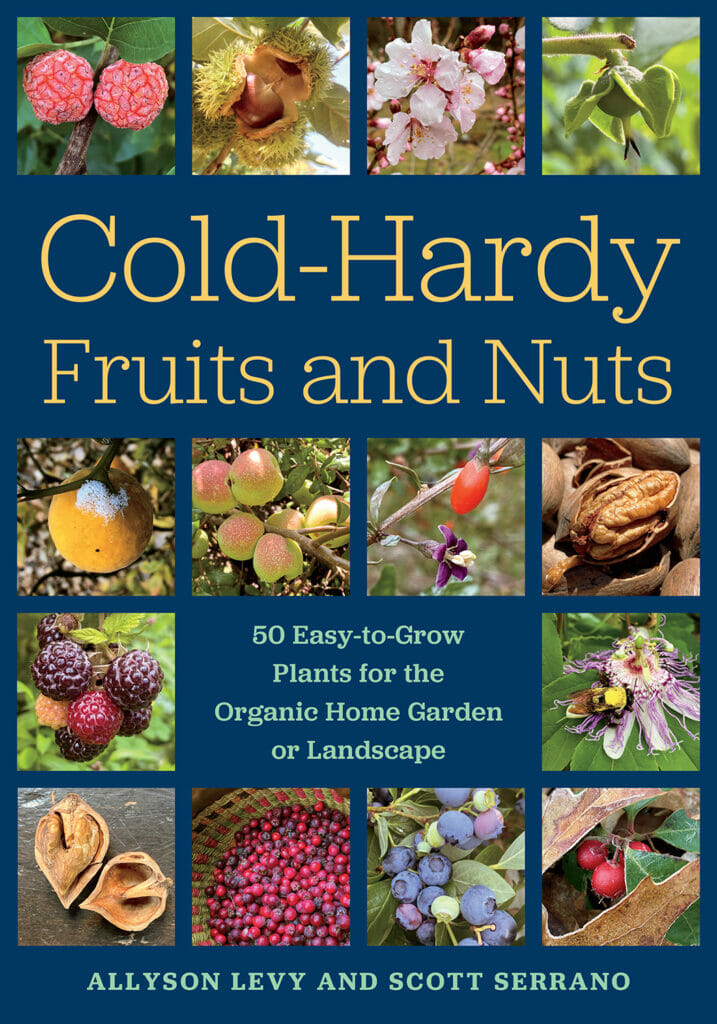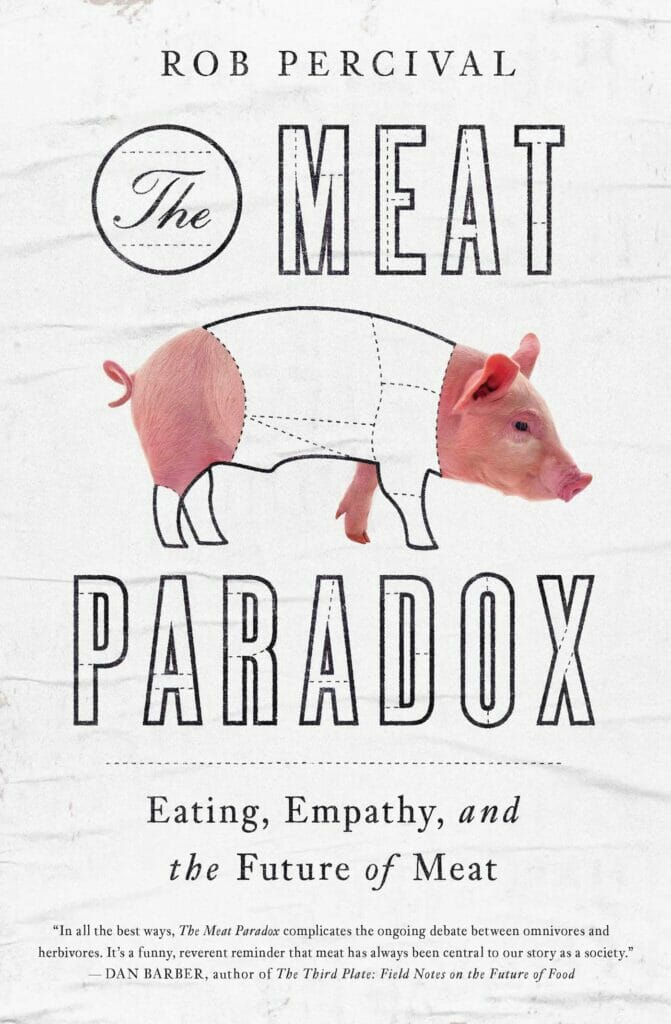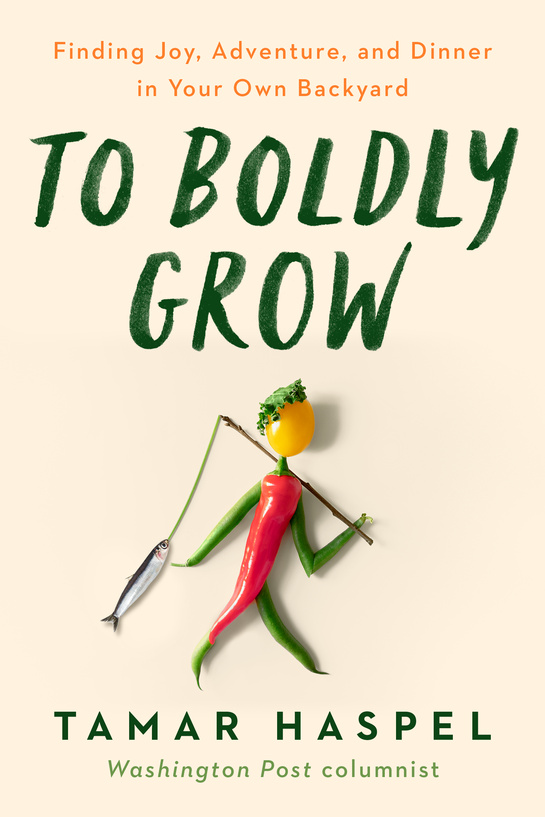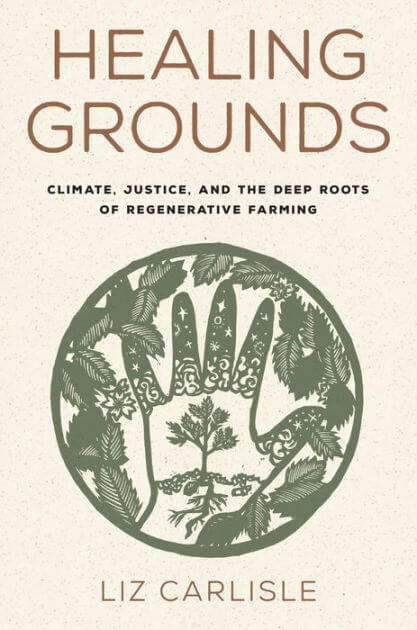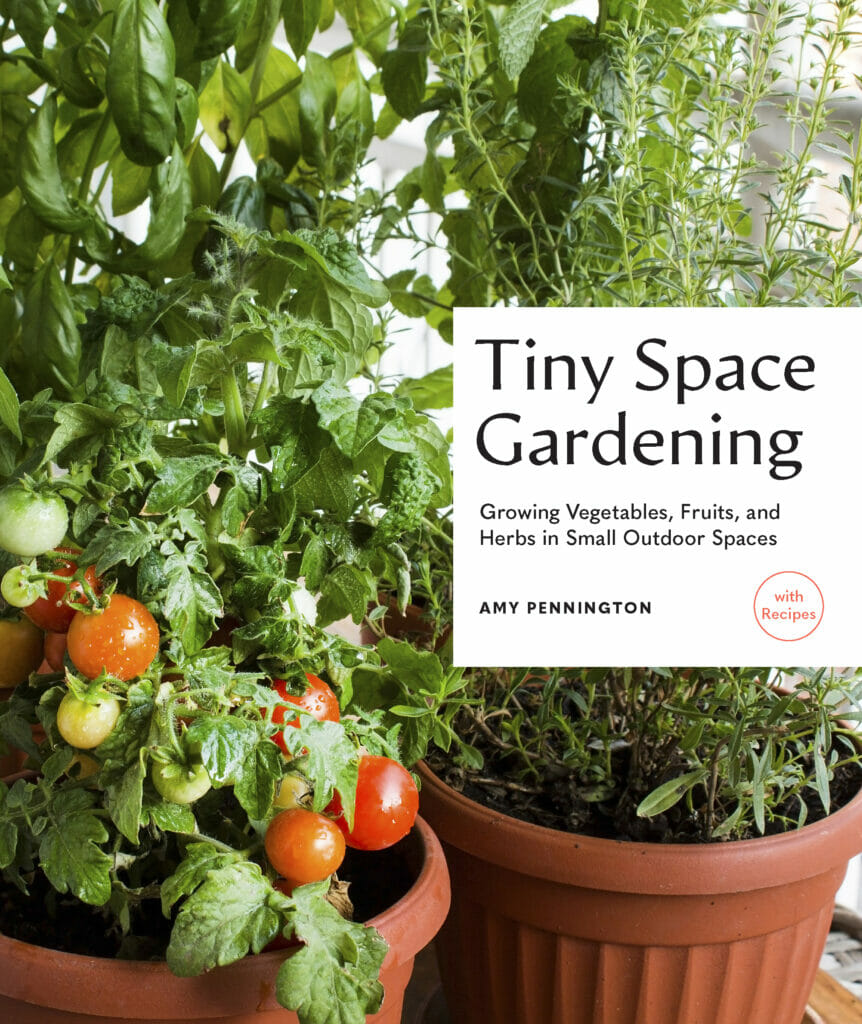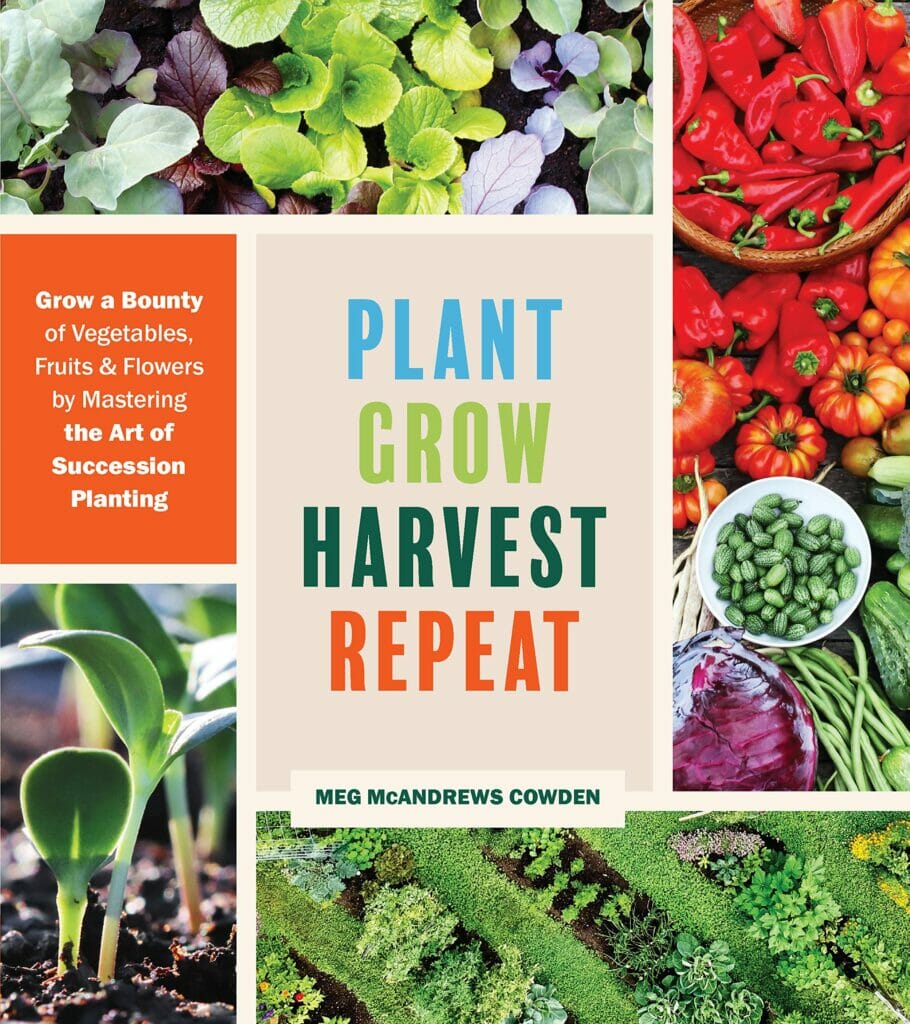As you wait for longer days and warmer temperatures, here are some new books to pass the time with.
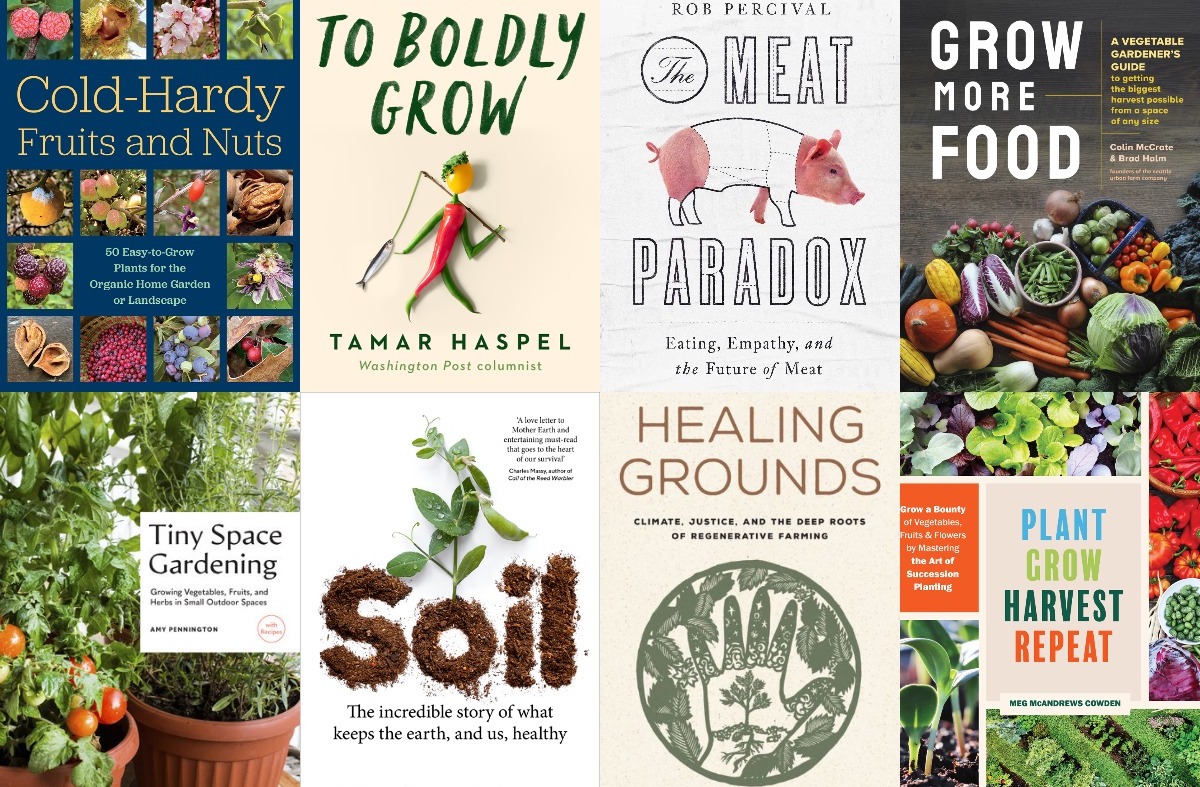
Spring is coming. It might not always feel like it, but take a look outside. The days are getting longer and the temperatures are beginning to level off. We just have to push through these last few weeks of winter.
And what better way to pass the time than to curl up with a new book? These newly released food and farming books are the perfect antidote to the winter blues. From instructional guides to investigations into how we eat to memoirs about gardening and farming, there’s a page turner for everyone. Grab a book and get cozy. Spring will be here before you know it.
Grow More Food: A Vegetable Gardener’s Guide to Getting the Biggest Harvest Possible from a Space of Any Size
Authors Colin McCrate and Brad Halm, founders of Seattle Urban Farm Company, want to show you how to grow more food in the space you have—whether that’s a 90-square-foot garden or a half-acre one. They walk you through planning your garden setup, selecting seed varieties, making nutrient-rich compost, managing crop rotation, propagating cuttings, storing seeds and more. This book is a great guide for every stage of the vegetable-gardening process.—Shelby Vittek
(Storey, February 1)
Grow Now: How We Can Save Our Health, Communities, and Planet―One Garden at a Time
Your garden is a great source of food, but it can also be a haven for the wildlife and bugs in your area. In this guide, author Emily Murphy walks you through how to set up a garden that will provide you with delicious food while also helping to attract birds and insects that can help rewild your land. Murphy focuses on creating a thriving bio-diversity and ensuring that you leave the soil healthier than you found it. It’s not a bad goal for a backyard garden but one that’s completely achievable with this guide.—Emily Baron Cadloff
(Timber Press, February 1)
Soil: The Incredible Story of What Keeps the Earth, and Us, Healthy
In this love letter to soil, Australian author Matthew Evans explores the important role of healthy soil and how poorly we’ve treated soil by over-clearing, overgrazing and over-plowing the earth. It’s time to stop treating soil like it’s just dirt, he says, and instead dig into developing a better understanding of and appreciation for what’s possible because of the ground beneath us. It’s a necessary step if we want to continue eating foods that nourish us.—SV
(Murdoch Books, February 22)
Funny Farm: My Unexpected Life with 600 Rescue Animals
After a lifetime of taking in and caring for homeless animals, Laurie Zaleski bought a 15-acre farm in southern New Jersey with the goal of someday running an animal rescue on it. The property is home to the nonprofit Funny Farm Rescue & Sanctuary, where Zaleski cares for unwanted and neglected farm animals, domesticated animals and special needs animals, including pigs, goats, horses, dogs, cats, chickens, llamas, an emu and a skunk. In her memoir, she chronicles her journey to running the animal rescue, introducing readers to her beloved animals along the way.—SV
(St. Martin’s Press, February 22)
Cold-Hardy Fruits and Nuts: 50 Easy-to-Grow Plants for the Organic Home Garden or Landscape
So, you live in a cold climate and want to diversify your garden? Perfect. There’s no reason you have to stick with crops such as beets, potatoes and turnips just because the temperature dips down in the winter. This manual from Allyson Levy and Scott Serrano showcase 50 tasty fruits and nuts that are perfect for not-so-warm weather—and they go way beyond the standard fare. The authors walk you through how to pick plants, where to plant them and what to expect in your first year. With their help, you’ll be growing persimmons, currants and hazelnuts in no time.—EBC
(Chelsea Green, February 25)
The Meat Paradox: Eating and, Empathy, and the Future of Meat
There is no greater debate happening in food ethics right now than whether or not we should eat animals. Author Rob Percival, an expert in the politics of meat and head of food policy at the Soil Association, explores the past, present and future of meat consumption. He looks at how technologies, geopolitical tensions, cultural preferences, personal emotions and pandemics (including the one we’re all still currently living with) have shaped our relationship with meat. If you’ve ever considered what it means to be an ethical omnivore, this book is one to add to your reading list.—SV
(Pegasus Books, March 1)
To Boldly Grow: Finding Joy, Adventure, and Dinner in Your Own Backyard
It all started with a bite of super-sweet cherry tomatoes. Journalist Tamar Haspel, a columnist for the Washington Post, and her husband Kevin had grown them on the rooftop of their Manhattan apartment building, along with peppers, cucumbers and various berry plants. Before then, Haspel hadn’t had much experience with growing or foraging for her own food. Then, in early 2009, right after the financial crisis, the couple decided to leave the city and move to Cape Cod. After going clamming for the first time, Haspel had a wild thought: What if they could go a whole year and eat at least one thing a day that they grew or gathered first-hand? Her husband, although skeptical, agreed to give it a try. In this witty and playful memoir, Haspel chronicles their journey from clueless urban gardeners to competent farmers, foragers and fishermen. It’s filled with funny (at least to readers) tales of epic failure, as well as encouraging tips for anyone looking to develop a better connection with their food.—SV
(G.P. Putnam’s Sons, March 8)
Healing Grounds: Climate, Justice, and the Deep Roots of Regenerative Farming
In Healing Grounds, author Liz Carlisle, assistant professor in the Environmental Studies Program at UC Santa Barbara, tells stories about how Indigenous, Black, Latinx and Asian-American farmers are reconnecting with their agriculture roots to fight climate change. She talks to a queer peach grower in California’s Central Valley about her family’s history of being discriminated against during Japanese American internment, and how that painful history is what helps her in “fighting against the impossible.” Carlisle highlights the Indigenous stewards who have practiced regenerative agriculture long before there was a term for it, as well as the Native communities working to reintroduce buffalo to prairie ecosystems. She explores the deep roots of Black agroforestry and how Black farmers are planting seeds of regeneration and renewal. Most importantly, Carlisle makes a case for ways in which we can combat climate change, restore our soil and humanity, but she emphasizes that we cannot do that until we reckon with agriculture’s history of oppression.—SV
(Island Press, March 10)
Tiny Space Gardening: Growing Vegetables, Fruits, and Herbs in Small Outdoor Spaces
You’d be amazed at just how much food you can grow on a small plot, a balcony or even in a small container garden. From the classic balcony tomato plant to herb gardens to zucchini and lettuces, if you have a bit of space, you can grow great food. Author Amy Pennington walks you through how to pick the right container, how to start your seedlings and even offers up some tasty recipes for your bountiful harvest. And if space is truly tight, Pennington shares windowsill and countertop projects and shares tips on how to grow from your own food scraps. With this guide, your garden can be as productive as you’d like, no matter the size.—EBC
(Sasquatch Books, March 15)
Plant Grow Harvest Repeat: Grow a Bounty of Vegetables, Fruits, and Flowers by Mastering the Art of Succession Planting
In this guide, author Meg McAndrews Cowden will show you that a garden is “never fully planted.” Instead, she’ll walk you through the art of continuous planting, so you’re always planning for the next season while enjoying your current crops. Done right, you’ll have a continuous stream of food nearly year round. Learn how to make the most of your early growing season, figure out the right sequence for planting in your space, as well as how to incorporate flowers for efficient pollination. Read the book now and you’ll have your whole planting year mapped out before the snow melts.—EBC
(Timber Press, March 15)
